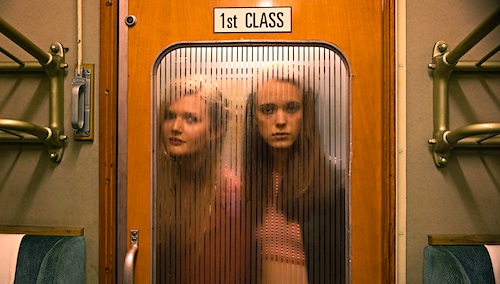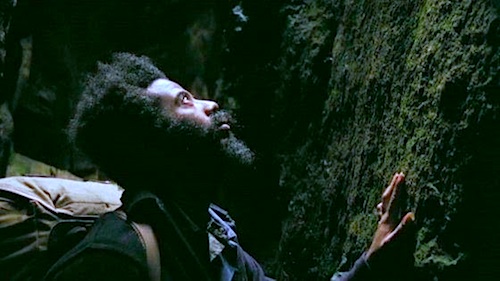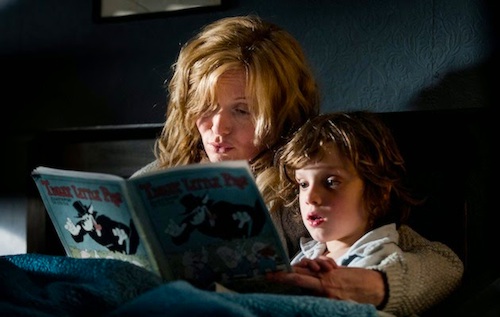
By Joe Bendel. When Lars von Trier and the increasingly controversial Shia LaBeouf collaborate on a film, it creates a certain level of expectations. Add in a generous helping of explicit sexual content and you would anticipate of perfect storm of provocation. Instead, it will be fans of the Dogma 95 co-founder who will feel vindicated by his latest bout of risk-taking. Far from a source of joy, sex is an act of existential alienation in von Trier’s Nymphomaniac, Volume One, which opens tomorrow in New York.
Seligman is a good Samaritan, who offers to take Joe to a hospital when he finds her battered in the street. She firmly demurs, only reluctantly allowing the older man to patch her wounds in his nearby flat. Joe not only blames herself for her alarming state, she rather seems to think she had it coming. She will explain why over a hot cup of tea.
Joe discovered her power turns men into animals at a young age. Like a playboy notching his belt, she regularly challenges her chum B to a contest of who can score the most men in a given period. However, B starts breaking one of their cardinal rules, allowing affection (or worse still, love) to influence her erotic pursuits. As a result, Joe becomes a solitary seducer, who deliberately leaves broken lives in her wake. Yet, Seligman insists on finding redemptive elements in each of her tales—or so he tries, in between fishing analogies and literary allusions.
Nevertheless, Joe’s self-indictment is consistently and cumulatively damning. In a particularly memorable episode, Mrs. H outdoes Medea, shaming her wayward husband and the trampy Joe by crashing their vice-pad with her shockingly young sons. Yet, Joe really is not shamed. She is already hollow inside, desensitized by her carnal compulsions.
Yes, there is a lot of sex and nudity in Volume One, but it is not the least bit seductive or titillating. Instead, this is an unrated morality tale, which explicitly cautions viewers of the dire consequences wrought by divorcing sex from love (or least like to a reasonable extent).
It should be noted, this all applies solely to Volume One seen independently of Volume Two. Based on the teaser that runs during the closing credits, von Trier apparently cranks up the lurid content in the concluding installment. Whether or not this anticipated foray into Shades of Grey territory will come with a disingenuous claim of “empowerment” remains to be seen. Nonetheless, Volume One ends at an oddly logical and unsettling point.
Frankly, it is not the naughty business that is interesting, but the conversations between the not-as-young-as-she-used-to-be Joe and Seligman. Von Trier’s language is highly literate and rich with meaning. Past von Trier alumni Charlotte Gainsbourg and Stellan Skarsgård quickly develop the darnedest screen chemistry, encompassing morbid fascination and humanist compassion. Despite the film’s explicit content, von Trier assembled quite a cast, including Uma Thurman, who knocks the wind out of viewers as the ferocious Mrs. H.

In a case of trial by fire, Stacy Martin makes a bold screen debut as the twenty-something Joe, but her character is so glacially reserved, the role better demonstrates her willingness to serve the needs of a film rather than her emotional range, per se. On the other hand, Christian Slater cannot shake off his snarky b-list persona as Joe’s henpecked father. (By the way, if any von Trier fans are wondering, Udo Kier will duly appear in Volume Two.)
With Volume One, von Trier stakes a claim to being a truly subversive contrarian. He makes sex look like no fun whatsoever. In fact, hedonism takes a toll on the soul and inextricably leads to some very dark places. Better to go fishing instead. Recommended for mature, fully informed audiences as a film in its own right, Nymphomaniac Volume One opens this Friday (3/21) in New York downtown at the Landmark Sunshine and uptown at the Elinor Bunin Munroe Film Center.
LFM GRADE: B+
Posted on March 20th, 2014 at 2:42pm.




